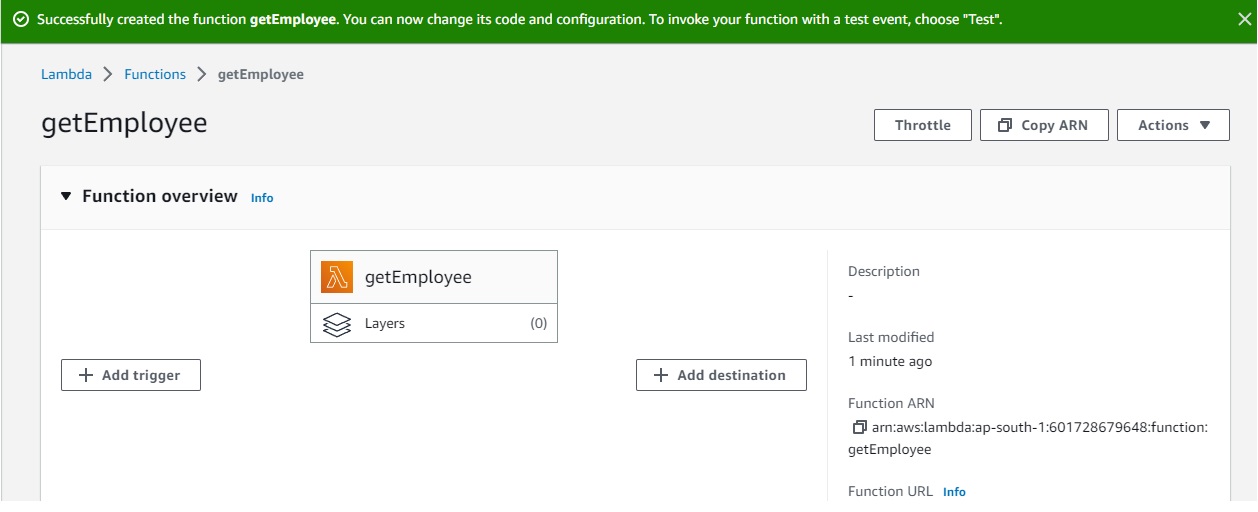- Serverless computing is a cloud computing model where developers write and deploy code as individual functions or services without managing servers.
- The cloud provider takes care of infrastructure provisioning, scaling, and maintenance.
- Developers focus solely on writing code, and the platform automatically allocates resources and scales applications based on demand.
- serverless computing provides developers with a more streamlined and efficient development experience while delivering automatic scaling, cost savings, and improved agility.
- It is particularly beneficial for applications with varying workloads, sporadic usage patterns, and the need for rapid innovation.
- AWS Account
My GitHub Repo: https://github.com/sampathshivakumar/Serverless-Web-Application
Create a bucket
Give Bucket name "dynamic-website-s3",Tag key="owner" value="sampath", rest all looks good and clik on Create bucket.
Now upload the Web-Content in S3 bucket
As of now we can't access the content on S3 as my bucket is not public
Go to properties tab and enable static website hosting, then in Index document typed profile.html and click save changes.
Go to Permissions tab and edit Block public access (bucket settings) , UnBlock all public access and save settings.
Edit Bucket policy in Permissions tab to make contents of S3 Bucket public
Now we can access the url of S3 Bucket static website.
As of now it can't save your data as we have not connected it to any database
Lets create a cloudfront and access the website using cloudfront.
As we have enabled static-website on S3 bucket it is asking us to go with Bucket website endpoint
In our previous post we went with Bucket website endpoint, so now lets go with Bucket endpoint only.
For that we need to disable Static website hosting, delete Bucket policy and block the public access to bucket
disable Static website hosting, deleted Bucket policy, block the public access
See Now its not showing any popup
Select Origin access type to Origin access control settings (recommended) and Create control setting and save
After Create distribution update the bucket policy to allow cloundfront to access the s3 bucket
Now the we can access the S3 Bucket using cloudfront Distribution domain name
To access the profile.html with Distribution domain name directly, mention profile.html in Default root object of settings.
Enter Table name = employeeProfile, Partition key = empId, tag key/value owner/sampath and create table.
Lets create a lambda function to get data from DynamoDB
Create a lambda role to access DynamoDB and select that role to lambda function
Write a small code for lambda to function and deploy
import json
import boto3
def lambda_handler(event, context):
dynamodb = boto3.resource('dynamodb', region_name='ap-south-1')
table = dynamodb.Table('employeeProfile')
response = table.scan()
data = response['Items']
while 'LastEvaluatedKey' in response:
response = table.scan(ExclusiveStartKey=response['LastEvaluatedKey'])
data.extend(response['Items'])
return data
Lets create a 2nd lambda function to insert data into DynamoDB
Copy and past the code in lambda function
import json
import boto3
# create a DynamoDB object using the AWS SDK
dynamodb = boto3.resource('dynamodb')
# use the DynamoDB object to select our table
table = dynamodb.Table('employeeProfile')
# define the handler function that the Lambda service will use as an entry point
def lambda_handler(event, context):
# extract values from the event object we got from the Lambda service and store in a variable
firstname = event['empFirstName']
id=event['empId']
lastname=event['empLastName']
age=event['empAge']
# write name and time to the DynamoDB table using the object we instantiated and save response in a variable
response = table.put_item(
Item={
'empId': id,
'empAge':age,
'empFirstName':firstname,
'empLastName':lastname
})
# return a properly formatted JSON object
return {
'statusCode': 200,
'body': json.dumps('Hello from Lambda, ' + firstname)
}
By now our DynamoDB Table will be ready
Lets go inside DynamoDB table and Explore table items, you can see anything
Now lets test our 2nd lambda function, try to insert some data into DynamoDB using lambda function
Test successful
Lets look in to DynamoDB table
Both lambda functions are working fine with DynamoDB, Our Backend is ready
We will create a REST-API
Select New API, give API name and Endpoint Type and click create API.
Now my Get method is done
Now lets create POST Method
Now we have to Deploy the API Gateway
Now lets enable CORS
Now our API-Gateway url is ready
We need to copy Invoke URL in Script file and again upload into S3 Bucket
We know that we have saved one record in DynamoDB during Test of lambda function. So if i click view all employee Profile, it should show the profile
Note: Special thanks to Amit Nag sir,Code is taken from his GitHub https://github.com/nspacer/serverless-website-hosting , i have not written the code myself.
Thank you for reading this post! I hope you found it helpful. If you have any feedback or questions,Please connect with me on LinkedIn at https://www.linkedin.com/in/sampathsivakumar-boddeti-1666b810b/. Your feedback is valuable to me. Thank you!

























































